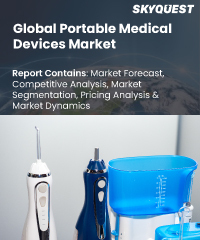
Report ID: SQMIG35A2544

Report ID:
SQMIG35A2544 |
Region:
Global |
Published Date: February, 2024
Pages:
157
|
Tables:
97 |
Figures:
80
North America has long held a leading position in the global portable medical devices market. Particularly in the United States, there is a substantial need for portable medical devices, a well-established healthcare infrastructure, and high healthcare spending. North America leads this market due in part to factors like a big aging population, rising chronic disease rates, and a strong emphasis on the implementation of healthcare technology.
The APAC region has sealed its place in the market as the fastest-growing segment. With rising disposable incomes, improved access to healthcare services, and growing healthcare awareness in countries like China, India, and Japan, the market has grown exponentially in the Asia-Pacific area. As a result of the region’s government making efforts to upgrade the healthcare system and reduce healthcare disparities, the region has contribute the the growth of the global portable medical devices market
Our industry expert will work with you to provide you with customized data in a short amount of time.
REQUEST FREE CUSTOMIZATIONWant to customize this report? This report can be personalized according to your needs. Our analysts and industry experts will work directly with you to understand your requirements and provide you with customized data in a short amount of time. We offer $1000 worth of FREE customization at the time of purchase.

Report ID: SQMIG35A2544